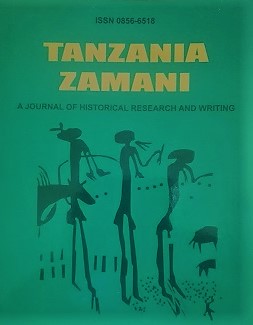Fictional reconstruction of history of Kilwa in M.G Vassanji ' s The Magic of Saida
Keywords:
history of Tanzania, reconstruction of history, African resistance, Kilwa historyAbstract
This paper explores M.G Vassanji ' s novel, The Magic of Saida (2012). It draws on the idea of reconstruction of history used in anthropology[1] and utilizes it as an approach in carrying out textual analysis of the novel and exploring how the novel reconstructs the history of Kilwa. Additionally, it employs Stephen Greeblatt idea of New Historicism, whereby appreciation of the text history and textuality of history is done on the assumption that the novel is a closely-knit fabric composed of both historical and literary threads. The paper argues that Kamal Punja ' s story about his return to Kilwa to look for his childhood lover, Saida is well intertwined with accounts and varying versions of stories of old Kilwa, slavery and slave trade in Kilwa, German intervention in Kilwa and African resistances. It is further argued that Vassanji is not only writing Kamal ' s story but also allowing Kamal to revisit his past and reconstruct the history and in that way through the novel fiction and history have been used by Vassanji to propose a view that there are differences between actual historical events, varying perceptions of the events and the histories about the events, thus Vassanji has provided readers with a room to question the process by which we represent ourselves and our world and to become aware of the means by which we make sense of and construct our history.
[1] F.C Bartlett. "Anthropology in Reconstruction", The Journal of the Royal Anthropological Institute of Great Britain and Ireland, 73, 1/2 (1943), pp. 9-16.


